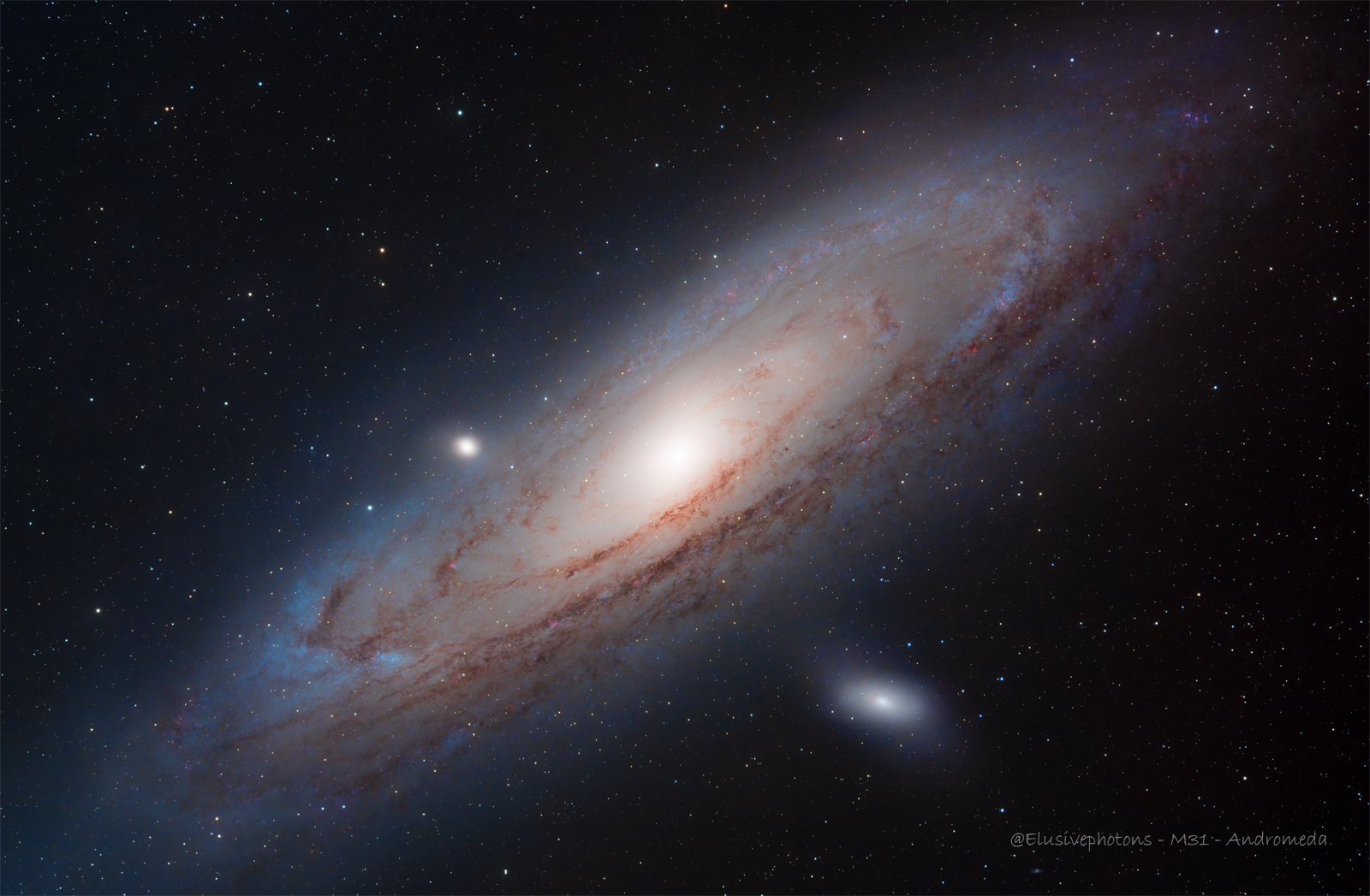Date: October 31st, 2021
•
Exposure: 291 x 3 minutes (14h 33min)
About This Image
Gear:
Telescope: Sky-Watcher Equinox 80ED
Mount: Software Bisque Paramount MX
Camera: ZWO ASI2600MC-Pro
Filter: IDAS LPS-D3 2"
Accessories: ESATTO 2" Focuser • Astro-Tech 2" Field Flattener
Guiding: SBIG ST-I Kit
Software: Photoshop • PixInsight • TheSkyX • Starkeeper Voyager
Description:
The Andromeda Galaxy, also known as Messier 31 (M31), is a spiral galaxy located about 2.5 million light years away from Earth(1)(2)(3). It is the closest large galaxy to the Milky Way and one of the few galaxies that can be seen unaided from Earth(2). The Andromeda Galaxy is approximately 200,000 light-years in diameter and is twice the size of the Milky Way(4). It is accompanied by 14 dwarf galaxies, including M32, M110, and possibly M33 (The Triangulum Galaxy)(2). The Andromeda Galaxy has a very crowded double nucleus. Not only does it have a massive star cluster right at its heart, but it also has at least one supermassive black hole hidden at the core(2).
In approximately 4.5 billion years, the Andromeda Galaxy and the Milky Way are expected to collide and the result will be a giant elliptical galaxy(2)(5). The Andromeda Galaxy has a past involving collisions with and accretion of other galaxies. Its peculiar close companion, M32, shows a structure that indicates that it was formerly a normal, more massive galaxy that lost much of its outer parts and possibly all of its globular clusters to M31 in a past encounter(5). The Andromeda Galaxy possesses around 450 large globular clusters, the most massive being Mayall II (G1), which is situated 130,000 light-years away from the galaxy's center(6).
Sources:
- (1)(2) Andromeda Galaxy - NASA
- (3) 15 Interesting Andromeda Galaxy Facts (M31) - Astronomy Trek
- (4) Hubble Zooms in on Double Nucleus in Andromeda Galaxy - NASA
- (5) Andromeda Galaxy - Wikipedia
- (6) Hubble's High-Definition Panoramic View of the Andromeda Galaxy
Distance: 2.5 Million light-years
Size: 200,000 light-years
|



